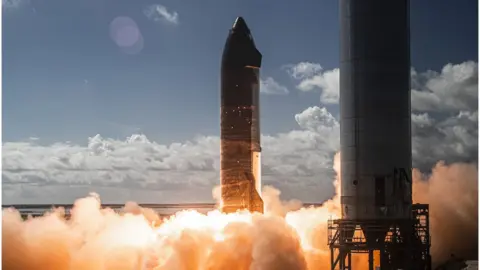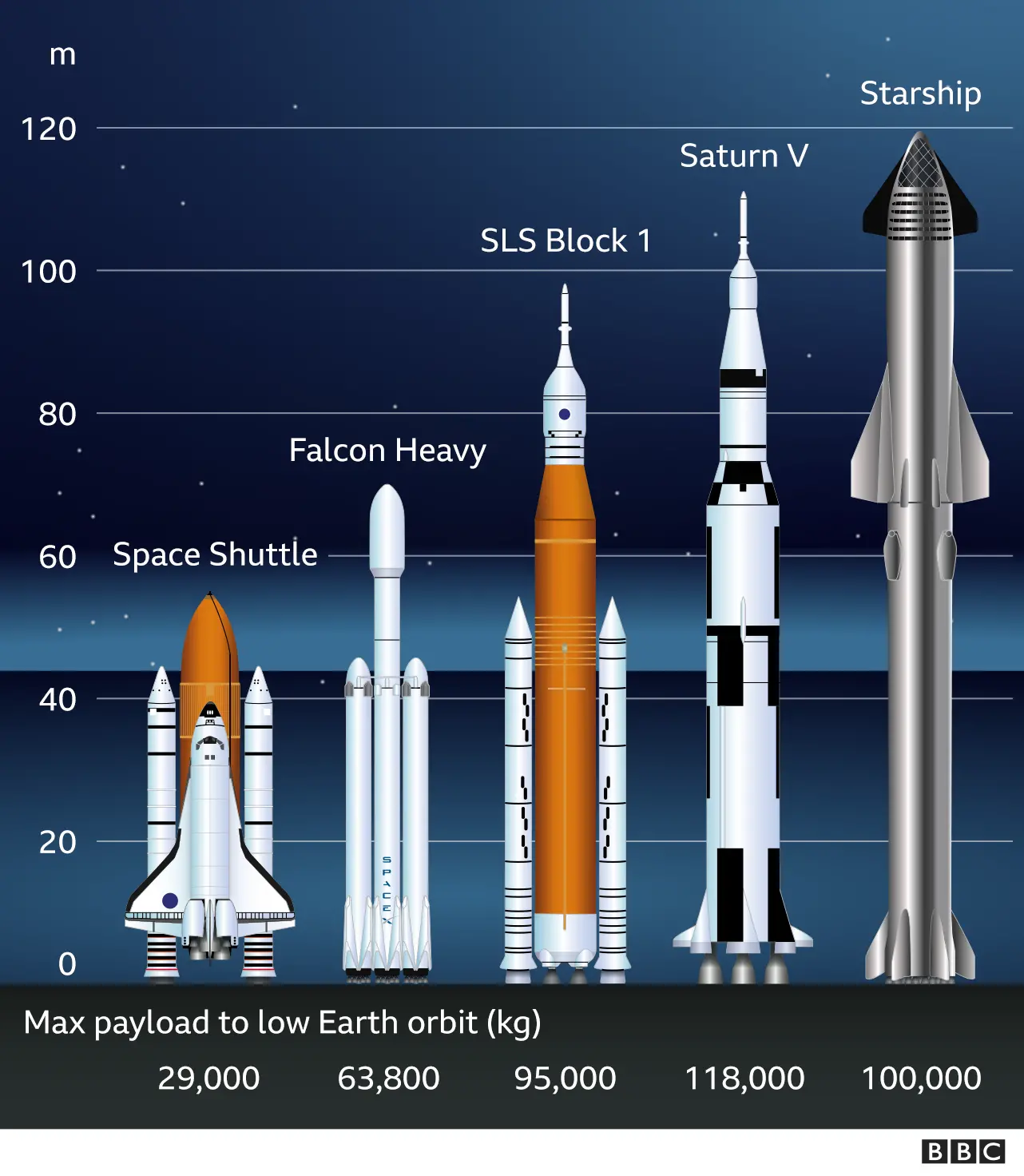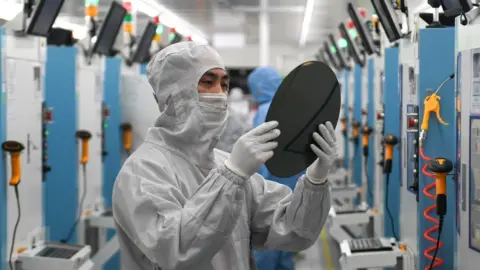Tech trends 2022: Starships and missing chips
 SpaceX
SpaceXElon Musk's dream of going to Mars could take a big leap forward next year when his company SpaceX attempts to launch Starship into orbit for the first time.
It will be the most powerful rocket ever launched into orbit, able to generate more than twice as much thrust as the Saturn V rocket, which took astronauts to the Moon half a century ago.
SpaceX has managed several sub-orbital test flights and Mr Musk hopes the first orbital flight, to be made by Starship SN20, will be in January.
"There's a lot of risk associated with this first launch, so I would not say that it is likely to be successful, but we'll make a lot of progress," Mr Musk told a forum of space scientists in November.

The vehicle is a two-stage rocket, the bottom part is a powerful booster called Super Heavy, on top sits a 50m (164ft) spacecraft called Starship - all up, it stands 120m tall.
SpaceX has developed its own engine called the Raptor and 29 of them will power Super Heavy, while Starship will have six.
That power will allow it to haul 100 tonnes of cargo into space.
Simeon Barber is a senior research fellow at the Open University and has spent his career developing instruments that will work in space, on planets and other bodies including the moon.
"Starship will be a re-usable transportation system, which in theory makes it cheaper," he says.
"In future they want to refuel it in Earth orbit - where it's already free from Earth's gravity and therefore every litre of fuel can be used to get a payload or human to Mars. They'd even like to refuel at Mars for the return trip to Earth.
"This for me would be the real game-changer - it's a way of zipping around the solar system without towing a massive fuel tank along behind."
Chips still missing
 Getty Images
Getty ImagesIf you have had a long wait for a new car or PlayStation, then you have been at the sharp end of a global shortage of computer chips.
It's been a major frustration for the technology industry in 2021.
The pandemic disrupted the production of computer chips and caused shipping problems. Meanwhile, some electronics firms shut production lines that were only marginally profitable.
But at the same time the demand for chips surged as consumers, stuck at home, bought electronic devices.
The combination has created a severe shortage and analysts say there is no immediate solution.
"Supply demand balance probably won't be coming back anytime soon, probably going well into 2022," says Wayne Lam, an analyst at CCS Insight.


Companies are investing heavily to meet demand, but it takes time to get new production lines up and running.
Even when chipmakers catch up with demand, it will take the makers of cars and electronics perhaps another two or three months to boost their production.
The SMMT, which represents the UK car industry, says the chip shortage is making production "unpredictable".
"There are no quick fixes, with shortages expected well into next year," says SMMT chief executive Mike Hawes.
Step forward for UK fusion
 Eurofusion
EurofusionFusion is the reaction that powers the Sun and other stars: if that tremendous power could be harnessed on Earth, it would provide a plentiful source of energy, from only a tiny amount of fuel and produce no carbon dioxide.
But to spark a fusion reaction, and keep it going, requires extreme temperatures and pressures. Scientists and engineers have been wrestling with this problem for decades, and in recent years have made important progress.
The UK is already home to JET, one of the world's leading fusion projects. Next year, the government will take another step forward, by announcing where it will locate STEP, a prototype fusion power plant, designed to be running by 2040.
The UK has already committed £220m and will be competing with other national programmes, as well as dozens of private initiatives, that want to make a fusion a commercial reality.
What might replace your gas heating?
On a smaller scale, next year could be the beginning of a revolution in home heating.
From April 2022, UK households will be offered subsidies of £5,000 to install heat pumps - electrically powered devices that absorb heat from the air, ground or water around a building.
The idea is that government subsidies will help spur households to make the switch and give the market a boost.
It is part of the government's plan to reduce greenhouse-gas emissions to net zero by 2050. Moving heating away from gas is important to meet that target, as the energy used for heating UK homes accounts for around 14% of the UK total emissions of carbon dioxide, according to the Climate Change Committee.
From 2025, new homes will not be allowed to have gas heating, so the race is on to develop alternatives to gas boilers.
 Heat Wayv
Heat WayvAnother alternative to gas will undergo testing next year.
The British firm Heat Wayv will install heating units that use microwave technology in properties in the UK, in the summer of 2022.
It has designed the units to replace any type of boiler and the firm says its unit will be cheaper to run over its lifetime than a gas boiler, although those calculations depend on the relative prices of gas and electricity.
Once the company has reviewed the tests results the unit will go into full-scale production, probably in late Spring of 2023.
Follow Technology of Business editor Ben Morris on Twitter.
